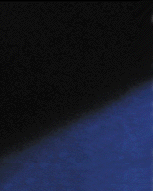|
|
| The cheapest way to tour Seoul is by taking the subway. On the subway you don¡¯t waste time in traffic. Each line has lots of natural places to visit like parks and mountains. Hope you have a wonderful tour! |
|
Dongnimmun station
Take Exit 5 at Dongnimmun station. The Seodaemun Prison is located near Dongnimmun (Independence Gate). It was forcibly built during the Japanese occupation (1910-45). It has stood for almost 80 years as a living historical reminder of the ordeals, grief, and tumultuous events of modern Korean history. When Japanese occupied Korea by force, they started to build the prison in 1907. It was completed on October 21, 1908, and opened under the name of Gyeong Gamok (a traditional name for a prison). As Korean sovereignty was being infringed by Japan, an Independence Movement was launched by numerous patriotic fighters.
Upset by this movement, the Japanese started to construct another prison at Gongdeok-dong, Mapo-gu, to arrest and imprison national patriots. Until the Liberation of Korea on August 15, 1945, it served as a clandestine Mecca of the anti-Japanese Independence Movement for many patriotic fighters, where they were imprisoned and tortured. Many were executed or died from their brutal treatment.
Such an overwhelming site were the visitor will feel the burden of the sorrow and pain endured by Korean patriots at the hand of the Japanese.
Opening hours 9:30¡17:00. Closed every Monday
Tel 02-363-9750¡1
Gyeongbok-gung station - Korea National Museum & Gyeongbok-gung
Exit 4,5 of Gyeongbok-gung station. It is the best of 5 castles that were built during the Choson period (1392 - 1910). It was built in 1395 for the new dynasty after the King Taejo Lee Jeong Gye decided to make Seoul the capital of Korea. Gyeongbok-gung lost its shape through fire and through the 500-year war but was finally rebuilt in 1865. The National Museum of Korea, next to the Gyeongbok-gung displays about 100,000 prehistoric remains that are thought to be approximately 5,000 years old.
Openging hours 09:00~18:00
Admission fee 700won(adult), Closed every Monday.
Anguk station : Insa-dong
Exit 6 Anguk station. Insa-dong, from Anguk crossway to Jongno 2-ga. Insa-dong, often called the traditional road 'Live Street Folk Museum', is a place where you can see, hear, taste the culture of Korea, past and present. It is a course that tourists must take. There are 50 places that display Antiques and art works such as earthware, craft, antique furnitures, folk paintings etc. There are over 40 galleries where you can see the trend and standard of Korean art all at once. Another attraction is the traditional tea houses and restaurants.
Chungmuro station : Namsangol Traditional Korean Village
Exit 3 of Chungmuro station. Namsangol Traditional Korean Village is where 5 restored Korean traditional houses and living necessities can be found. Namsangol Traditional Korean Village isn't a place for just traditional housing. You can also buy traditional craft work and experience Korean tradition. There is a traditional marriage re-enacted every Saturday and traditional day festivities and other Korean traditional customs can be enjoyed there.
Opening hours 09:00~18:00, Closed every Tuesday.
Apgujeong station : Apgujeong-dong & Cheongam-dong
Exit 2 Apgujeong station. 2 stops by bus. Apgujeong-dong and Cheongam-dong represent the noble culture of Korea. Apgujeong-dong is famous for its Rodeo Road, where are set all kinds of western style jazz bars. Cheongam-dong is known as the Food Valley because you can try a multitude of foreign dishes there.
Express Bus Terminal station : Express Bus Terminal & Central City
Connected to the Express Bus Terminal station. There are buses to all regions of Korea at the Express Bus Terminal station. More than 500 thousand people travel from here every day. The Central City building houses the biggest department store, the biggest book outlet, etc. Central City also has a cultural space with the Young Plaza, a theater, a bookstore and the central park, where concerts are regularly given. You can also food from all over the world at the indoors food court.
Nambu Bus Terminal station: Seoul Arts Center
A 10-minute walk from exit 4 or 5 at Nambu Bus Terminal station (Seoul Arts Center). It is also possible to take a shuttle bus from exit 5. The Seoul Arts Center is a cultural facility representing Korean cultural and art. It houses an opera theater, a play theater, a performance hall, an exhibition hall, and a calligraphy gallery. its facilities are amongst the best in the world. Each month offers various new programs.
|
|
|
|
| 15-06-2001 |
|
|
|
|

